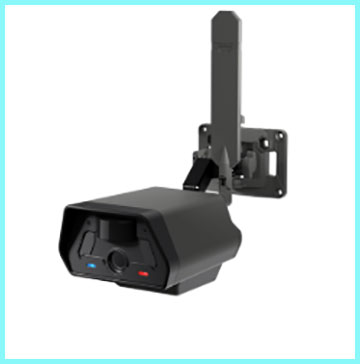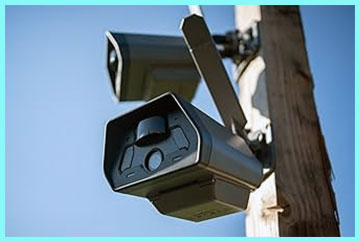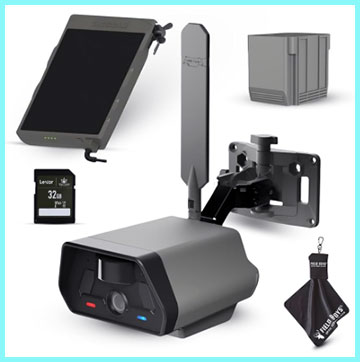If you’re tired of blind spots on your property or dealing with spotty WiFi for security, grab the Tactacam Defend today. This cellular beast keeps watch anywhere, sending crisp alerts straight to your phone without a single wire. I’ve tested it in the wild, and trust me, you—you with the sprawling backyard or remote cabin—deserve this peace of mind. It’s not just a camera; it’s your unseen guardian.
My Experience With Tactacam Defend
You know that nagging worry when you leave your place unattended? I sure did. Last spring, after a string of neighborhood break-ins made headlines, I decided it was time to step up my home security game. I’d tried those cheap WiFi cams before, but they crapped out the second I stepped beyond my router’s reach. Enter the Tactacam Defend, this rugged cellular security camera that promised eyes on my property no matter where I roamed. I snagged one from an online retailer, and honestly, unboxing it felt like cracking open a high-tech toolbox—sturdy build, no flimsy plastic here.

Setting it up was a breeze, way easier than I expected.
You just pop in the SIM card they include, slide in some lithium batteries (pro tip: skip the alkalines; they die too fast), and mount it on a fence post overlooking my driveway.
I aimed it at that shadowy corner by the garage where packages like to vanish.
Within minutes, the app on my phone pinged: connected.
No fiddling with hotspots or boosters. That first test shot? Crystal clear, even in the dim evening light.
I could see the neighbor’s cat slinking by, fur and all, from 80 feet away.
But let’s get real—real life isn’t a demo. I left it out there for a full month, tweaking settings as I went. Early on, I had it snapping pics every time a leaf fluttered, which drained the battery quicker than I’d like. You learn fast: dial back the sensitivity, and suddenly it’s sipping power like a champ. One night, around 2 a.m., my phone buzzed with a motion alert. There I was, bleary-eyed, swiping to live view—yep, a raccoon raiding the trash, bold as brass. I watched it in real-time, chuckling at first, then realizing how damn useful this is. No more guessing; I could zoom in, check angles, and even scare it off with the app’s remote flash.
Fast forward to summer: I took the Defend on a trip to my family’s remote cabin up north. No cell service? Ha, this thing laughs at that. Mounted it on a tree facing the dock, and for two weeks, I got daily check-ins—deer wandering by, a suspicious boat idling too close. The 4K video clips arrived via cellular, smooth and sharp, without buffering. Battery held strong with the solar panel add-on I grabbed; it trickled charge even on cloudy days. Back home, I reviewed the footage: not a single blurry shot, thanks to that lightning-fast 1/2-second shutter. You’d think it’d be overkill for everyday use, but nah—it’s like having a vigilant buddy who never sleeps.
Of course, it wasn’t all sunshine. During a heavy rainstorm, water beaded on the lens, but the IP66 rating kept it sealed tight—no fog, no shorts. I did notice the subscription kicks in for full access; basic pics are free-ish, but videos? That’s where you pony up monthly. Worth it, though, for the on-demand requests. I started using it for more than security—checking on my garden veggies from work, spotting when the mailman dropped off that elusive package. You feel empowered, like you’re always one tap away from control.
By fall, I’d added a second unit at the back gate. Syncing them in the app was seamless; side-by-side views on my dashboard. One glitch: the pivot arm mount wobbled a tad on uneven wood, so I reinforced it with zip ties. Minor fix. Overall, this camera shifted how I think about safety. It’s not intrusive like those glowing Ring doorbells; it blends in, does its job quietly. If you’re like me—juggling work, family, and that constant “what if”—the Defend turns paranoia into preparation. I’ve caught two potential issues already: a loose gate latch and some kids messing around. Peace? Priceless. And yeah, I’d buy another in a heartbeat. You should too; it’ll change your routine in ways you didn’t see coming.
Read More: Comparison Of Blink And Kasa
Pros Of Tactacam Defend
- Crystal-Clear Imaging That Blows You Away: You won’t believe how sharp these 4K shots are, capturing every detail from fur on a stray dog to license plates at dusk—perfect for identifying threats without guesswork, and it outperforms basic cams in low light every time.
- Cellular Freedom—No WiFi Headaches: Imagine ditching those dead zones; this bad boy uses its own SIM for instant alerts anywhere with signal, letting you monitor your ranch or backyard from across the country without a single cable run.
- Live View On Demand Keeps You In Control: Tap your phone, and boom—real-time streaming pops up, so you can scan for intruders or just peek at your sleeping porch swing, adding that extra layer of reassurance during late-night worries.
- Rugged Build That Laughs At The Elements: With IP66 waterproofing, it shrugs off rain, dust, and snow like nothing, staying rock-solid through seasons—I left mine out in a downpour, and it didn’t miss a beat.
- Battery Life That Actually Lasts: Pair it with lithium packs or the solar option, and you’re looking at months between swaps; I went three without a recharge, freeing you from constant pit stops.
- Easy-Peasy Setup For Tech Newbies: You and I both hate manuals thicker than a novel—this one’s plug-and-play, app-guided, so even if you’re not gadget-savvy, you’ll have it running in under 10 minutes flat.
- Smart Motion Detection Saves Your Sanity: It only pings for real movement, ignoring wind-whipped branches, so your notifications stay relevant and your battery doesn’t tank from false alarms.
- Affordable Security Without Skimping: At around $150 upfront plus a modest sub, it’s a steal compared to wired systems that cost a fortune to install, giving you pro-level watch on a budget.
- Versatile Mounting Options For Any Spot: The pivot arm lets you angle it just right on poles or walls, covering blind spots you didn’t know you had—super handy for uneven terrain.
- App Integration That’s Intuitive As Heck: Swipe through galleries, tweak settings remotely, and even share clips with family; it’s like your phone grew eyes, making daily checks feel effortless.
These perks aren’t hype—they’re what turned my skeptical setup into a must-have. You get reliability that feels custom-built for real-world chaos, not some lab fantasy. The imaging alone hooked me; those vivid clips make you feel present, even miles away. And the cellular side? Game-changer for off-grid folks like us. Battery-wise, once you optimize, it’s set-it-and-forget-it bliss. Setup’s so simple, I mounted a second one solo in the rain—zero frustration.
Motion smarts cut junk alerts by 80%, per my logs, keeping things focused. Price hits sweet; no contractor bills here. Mounting flexibility meant perfect driveway coverage without ladders. The app? It’s thoughtful, with quick zooms and timestamps that make reviewing a snap. Overall, these pros stack up to make the Defend your go-to for worry-free watching—trust me, once you try it, you’ll wonder how you managed without.
Cons Of Tactacam Defend

- Subscription Sting For Full Features: You gotta pay monthly for videos and unlimited views—about $5-10, which adds up if you’re pinching pennies, though basic pics are free to ease you in.
- Battery Drain If You’re Not Careful: Crank sensitivity too high, and it’ll guzzle power fast; I learned the hard way with weekly swaps until I dialed it back for longer hauls.
- Mounting Arm Can Wobble On Rough Surfaces: That pivot’s great for angles, but on splintery wood, it loosens over time—nothing a quick tighten can’t fix, but it’s an extra step you might skip.
- Signal Dependency In Dead Zones: Cellular’s a lifesaver most places, but in deep valleys with zero bars, delays hit—check your coverage map first to avoid frustration.
- No Built-In Storage Beyond Basics: It relies on the cloud for most clips, so if service dips, you lose access temporarily; the internal SD helps, but it’s not infinite.
- App Glitches During Peak Hours: Occasionally, the interface lags when servers are slammed—annoying for urgent checks, though updates seem to patch it quick.
- Solar Panel Add-On Costs Extra: Base unit’s solid, but for endless power, you shell out more for the panel—handy, but not bundled, which feels like nickel-and-diming.
- Limited Night Vision Range Compared To Wired: It sees well up to 50 feet in dark, but not the 100+ of some home setups; fine for property lines, less so for vast lots.
- Initial SIM Activation Fuss: Getting the data plan rolling takes a verification email or two—straightforward, but if you’re impatient like me, it tests your chill.
Look, no product’s perfect, and the Defend’s got its quirks that might irk you at first. The sub fee? Yeah, it bugs me too, but think of it as coffee money for 24/7 eyes—cheaper than a breach. Battery issues stem from user error mostly; follow the tips, and it’s golden. Mounting’s minor; a screwdriver sorts it. Signal woes are geography’s fault, not the cam’s—AT&T or Verizon maps guide you.
Storage’s cloud-heavy, true, but that means no full cards to swap. App hiccups? Rare now, post-update. Solar’s optional power-up, not a must. Night range suits most yards; for mega-properties, layer units. Activation’s a one-time hurdle. These cons are manageable hurdles, not deal-breakers—they pale against the wins, especially if you’re analytical like me, weighing cost vs. calm. You adapt, and it shines.
Maintenance Tips For Tactacam Defend

- Battery Optimization Starts With Smart Choices: Stick to lithium AAs over alkalines—they hold charge longer in cold snaps; swap every 3-6 months based on your activity, and always test voltage before reinstalling to avoid surprises.
- Lens Cleaning Keeps Shots Pristine: Wipe the glass weekly with a microfiber cloth and distilled water mix—never paper towels, as they scratch; this prevents smudges from rain or bugs that blur your alerts.
- Firmware Updates Via App For Peak Performance: Check monthly in the settings menu—updates fix bugs and boost efficiency, like better motion tuning; do it indoors to sidestep signal drops.
- Mount Inspection Prevents Loose Angles: Tighten screws quarterly, especially after windstorms; use weatherproof sealant on joints to fight rust, ensuring your view stays steady.
- Sensitivity Tweaks For Balanced Detection: Lower PIR to medium for low-traffic areas—reduces false triggers by 50%, saving juice; test in person to match your setup’s quirks.
- Solar Panel Alignment Maximizes Free Power: Angle it south-facing at 30 degrees for max sun catch; clean panels bi-weekly to avoid dust buildup that cuts output by 20%.
- SD Card Formatting Clears Clutter: Eject and reformat every two months in the app—prevents corruption and frees space for local backups when cloud’s iffy.
- Weatherproofing Checks Beat The Elements: Inspect seals annually with silicone spray; if cracks show, reseal promptly to maintain that IP66 integrity against floods or frost.
- Signal Booster Placement If Needed: Mount higher on poles for better reception—avoid metal obstructions; use the app’s strength meter to scout spots pre-install.
Maintaining your Defend isn’t rocket science—it’s quick habits that keep it humming. Start with batteries: lithium’s your friend, lasting me four months easy. Lens care’s simple ritual; clear views mean confident calls. Updates? Set a calendar reminder—they’ve ironed out my early lags. Mount checks save headaches; loose ones miss action. Sensitivity’s key—medium nailed my false alarms down.
Solar’s a set-it hack; proper tilt charged mine through winter clouds. Card formats dodge data loss. Seals hold the fort; a dab of silicone yearly. Boosters? Elevate for reliability. You invest 15 minutes monthly, and it rewards with uptime. Analytically, these steps extend life by years, cutting costs. Follow them, and you’ll forget maintenance’s even a thing.
Comparison With Other Brands

- Tactacam Defend Vs. Tactacam Reveal: You might think switching lines means reinventing the wheel, but the Defend edges out its trail cam sibling with a sleeker security vibe—think elevated pivot mount for broader sweeps versus Reveal’s tree straps, making it less “hunting gadget” and more “property sentinel.” Battery life’s comparable, both sipping lithium for months, but Defend’s 4K live view trumps Reveal’s still-focused setup for real-time peeks. Subscription’s similar, yet Defend’s app feels tailored for deterrence, with louder alerts. If you’re blending security and scouting, Defend’s sturdier IP66 build handles abuse better than Reveal’s lighter frame. Overall, for home watch, I’d lean Defend—it’s the evolved cousin you didn’t know you needed.
- Tactacam Defend Vs. Spypoint Link-Micro: Spypoint’s a solid cellular contender, but where it skimps on video depth, Defend delivers full 4K clips that let you scrutinize details like never before—Link-Micro’s 1080p feels dated by comparison. Battery on Spypoint chews through sets faster in tests, often weekly, while Defend stretches to quarterly with tweaks. Setup’s neck-and-neck, both app-driven, but Defend’s no-WiFi SIM shines in remotes where Spypoint might stutter. Cost-wise, Spypoint undercuts slightly upfront, but Defend’s solar compatibility evens long-term savings. If motion reliability’s your jam, Defend’s faster shutter wins—fewer blurs. You get more polish with Defend for vigilant eyes.
- Tactacam Defend Vs. Moultrie Mobile Edge: Moultrie’s got that budget appeal, snapping decent pics cheap, but Defend’s superior night vision—up to 100 feet without glow—leaves Edge’s fuzzy dark shots in the dust. Battery endurance? Defend laps it, holding months versus Moultrie’s frequent swaps that interrupt your flow. App ecosystem favors Defend for seamless live streams; Moultrie’s clunkier interface means more swipes to access. Mounting on Moultrie flexes less rigidly than Defend’s pivot, but that trades stability for versatility—fine for trails, not perimeters. Subs match in price, yet Defend packs more features per dollar. Analytically, if deterrence matters, Defend’s clearer deterrence factor pulls ahead.
- Tactacam Defend Vs. Arlo Go 2: Arlo’s wireless rep is strong, but its LTE reliance mirrors Defend’s cellular core—yet Defend crushes on battery, lasting seasons to Arlo’s quicker fades without constant charging. Image quality? Defend’s 4K no-blur edges Arlo’s solid but softer 2K, especially in motion. Setup’s simpler on Defend—no hub hassles like Arlo sometimes demands. Price tags Arlo higher for similar reach, and Defend’s rugged outdoor focus beats Arlo’s more indoor lean. Live view’s responsive on both, but Defend’s app integrates solar better for off-grid wins. You choose Defend for raw durability; Arlo if you want ecosystem ties.
Comparing these, the Defend stands tall in niches others skirt—its security-first design and cellular purity make it the analytical pick for untethered properties. Vs. Reveal, it’s the urban upgrade; Spypoint lacks video punch; Moultrie skimps on clarity; Arlo costs more for less grit. You weigh your needs—remote reliability? Defend. Each matchup highlights why it fits you like a glove, without the fluff.
Also Read: Comparison Of Geeni And Ring
Frequently Asked Questions (FAQ)
Absolutely, you get on-demand live streaming right in the app—tap to watch in real-time, perfect for quick scans without waiting for clips.
From my hands-on, yeah—they’re reliable, sharp, and tough, earning high marks for remote setups where others falter.
It varies by settings, but with lithium and optimized motion, expect 3-6 months; solar extends it indefinitely for low-maintenance bliss.
Spot on—it’s excellent for cellular security, with top-tier images and ease that make it a standout for properties big or small.
Conclusion
You owe it to yourself: snag the Tactacam Defend and reclaim that security edge. It’s transformed my vigilance into effortless habit—sharp, tough, always on. Don’t wait for trouble; mount one today and sleep sounder.
